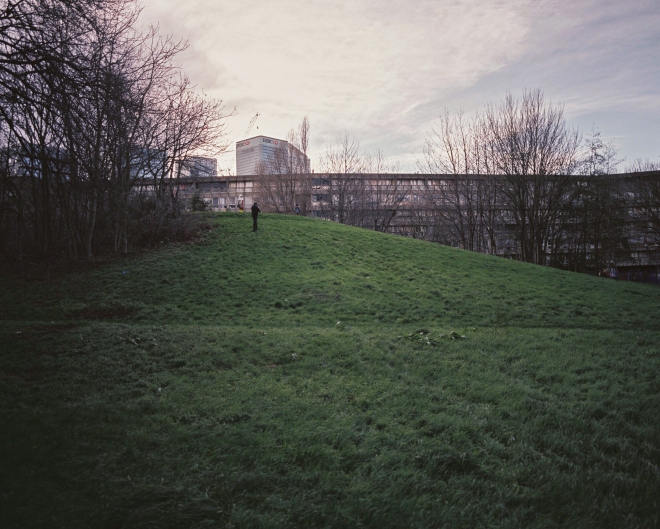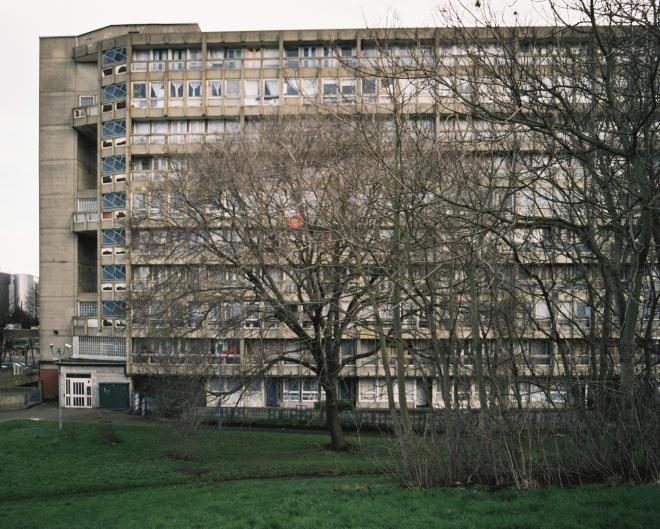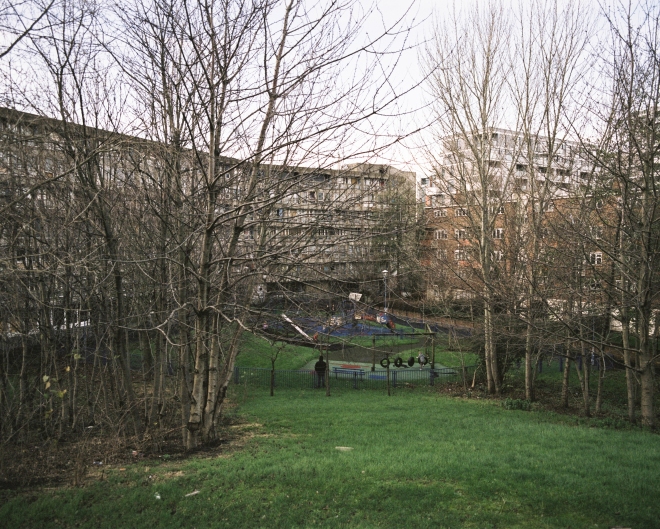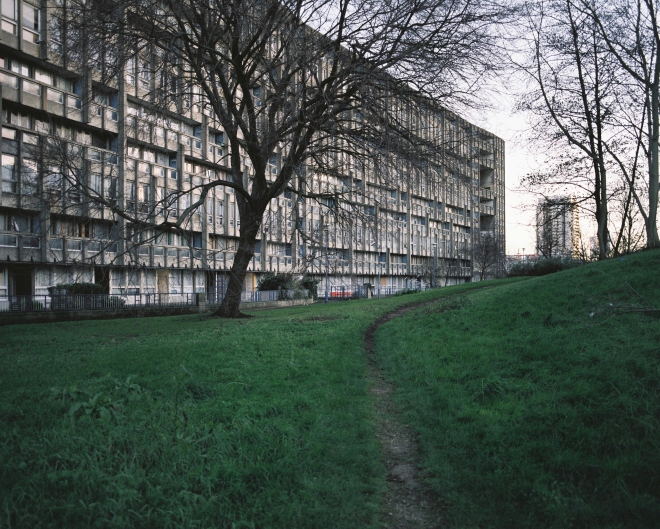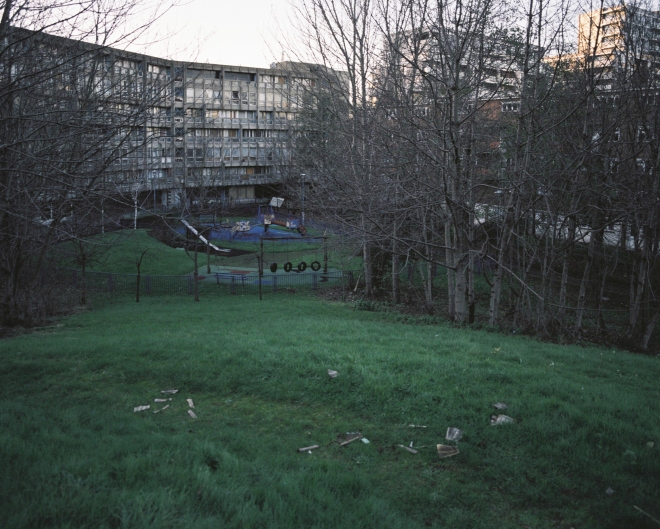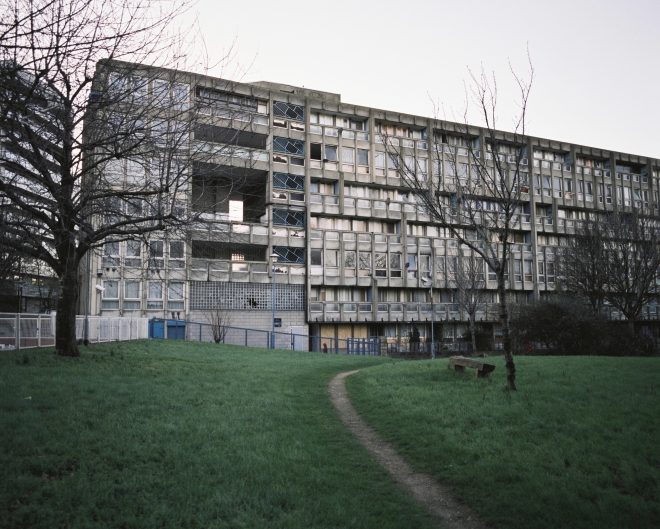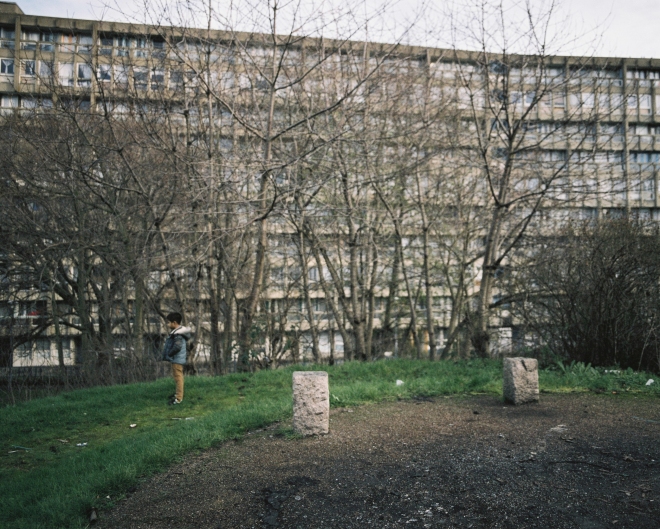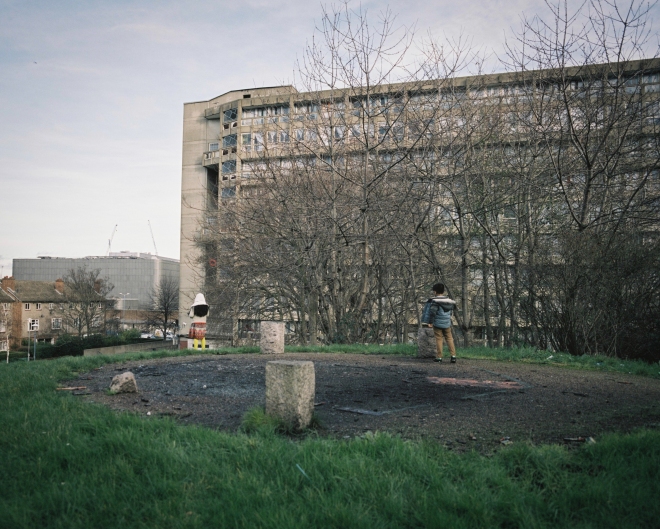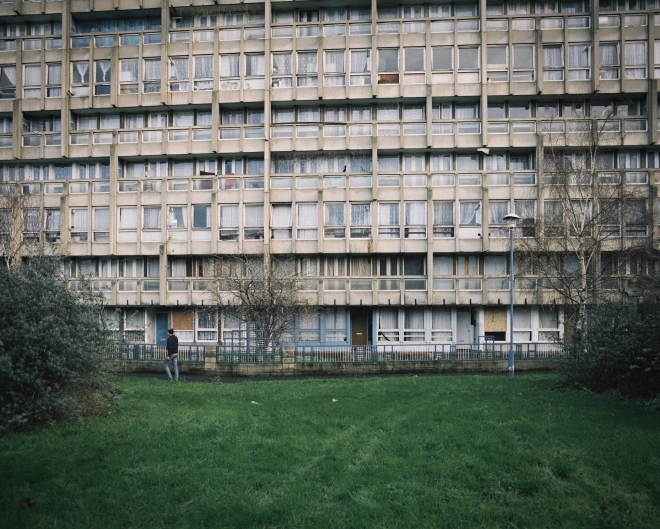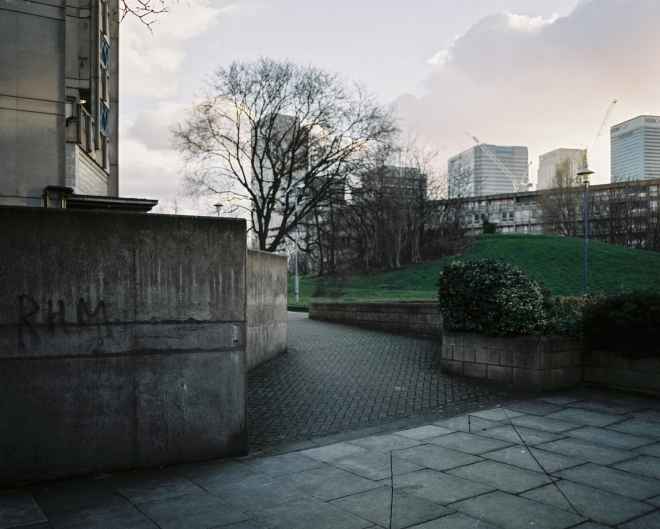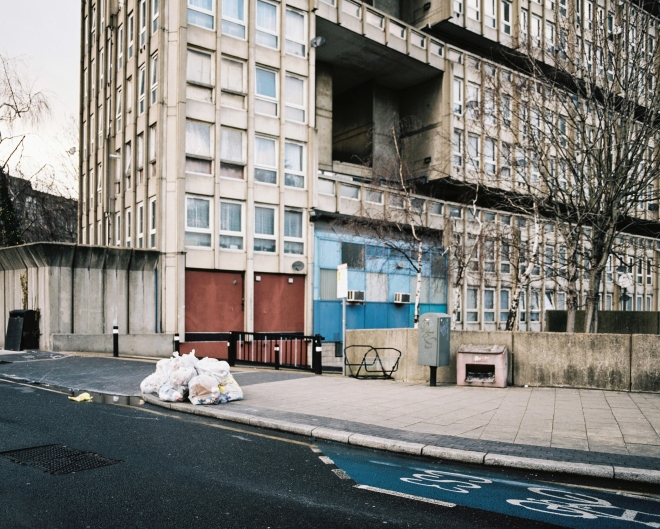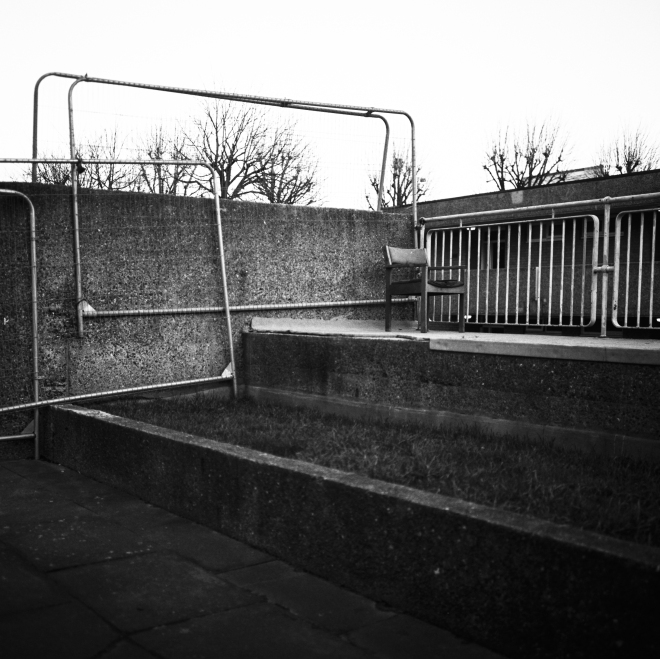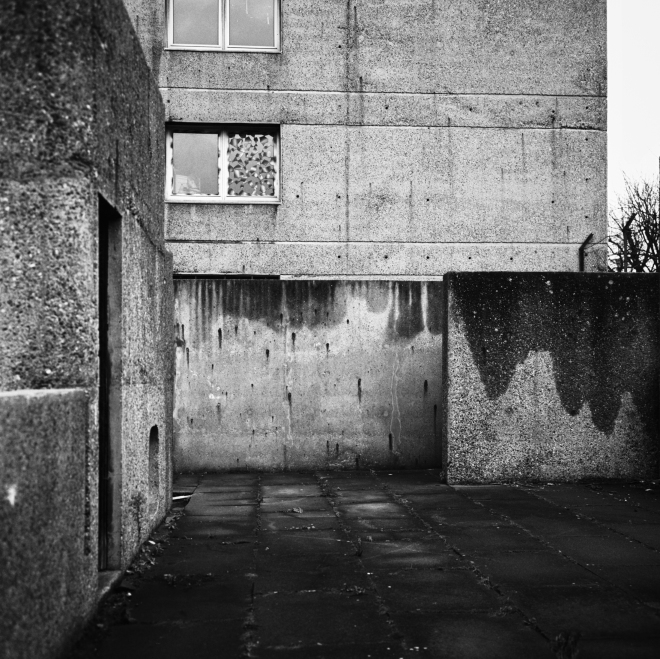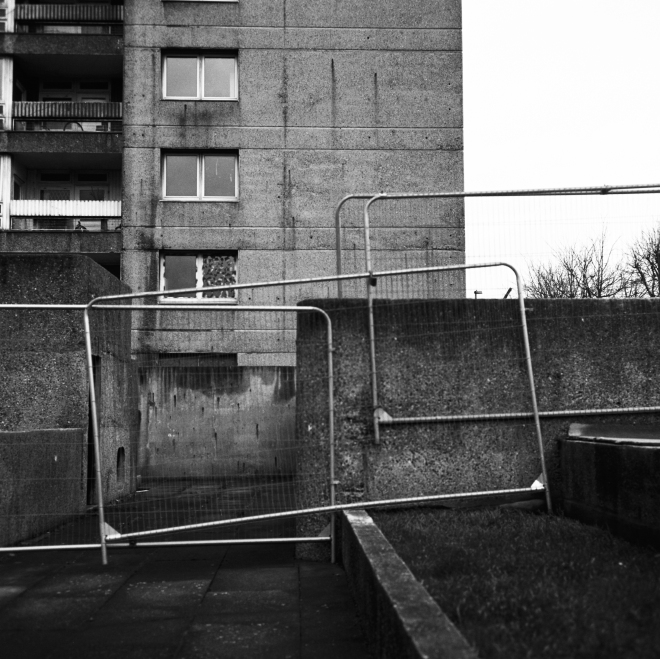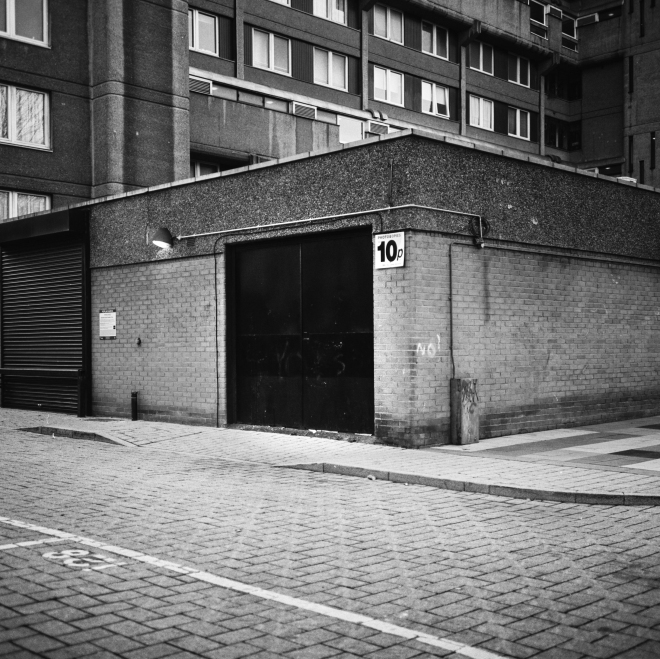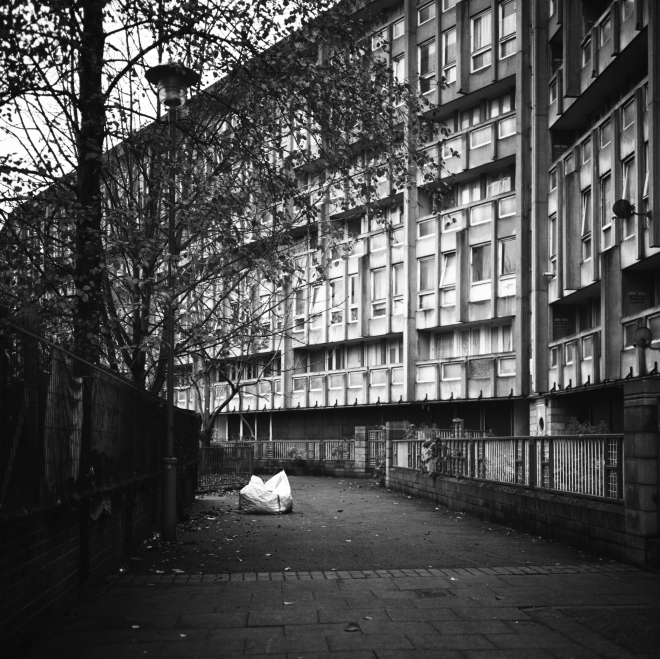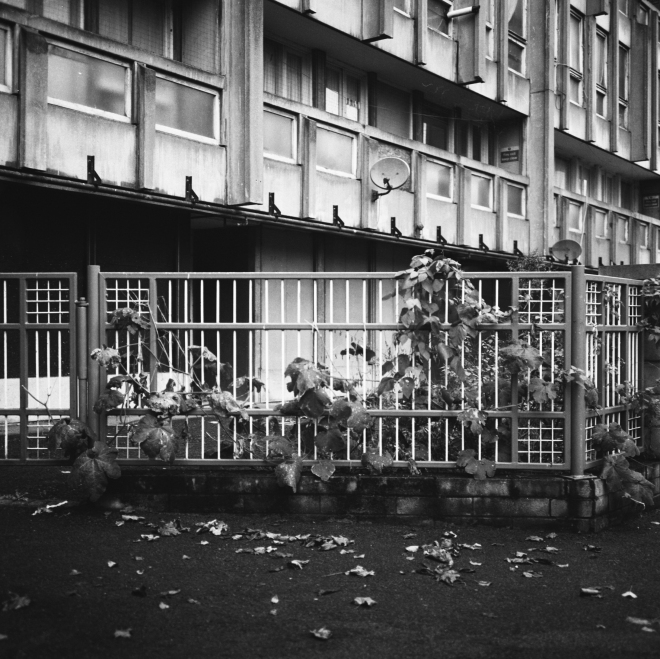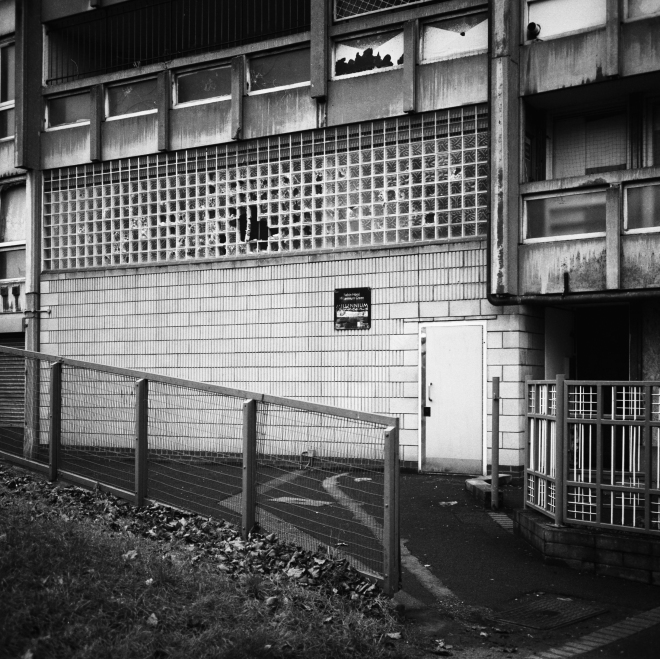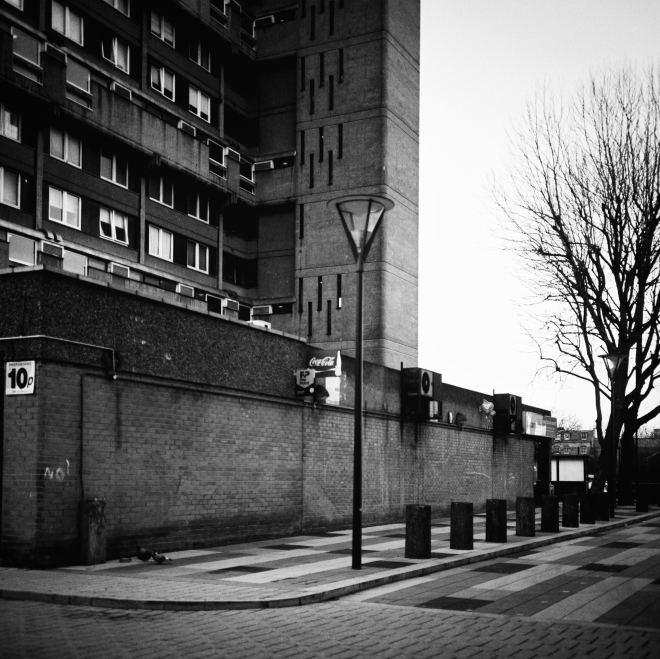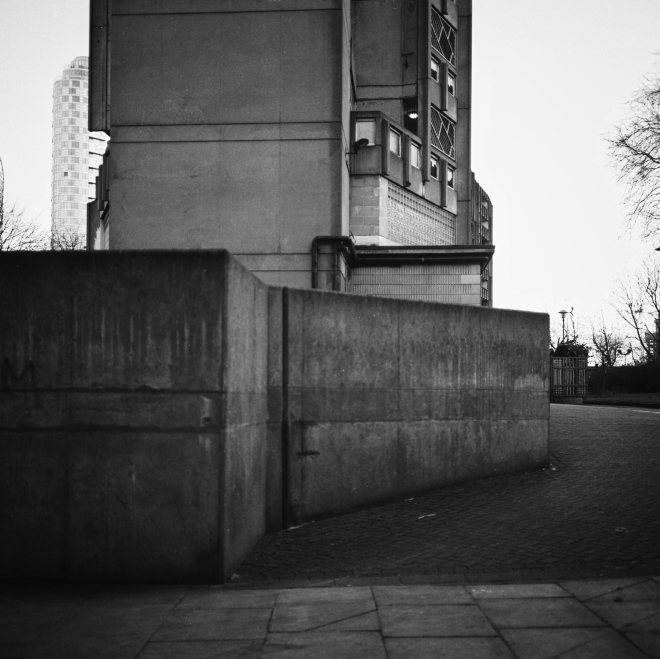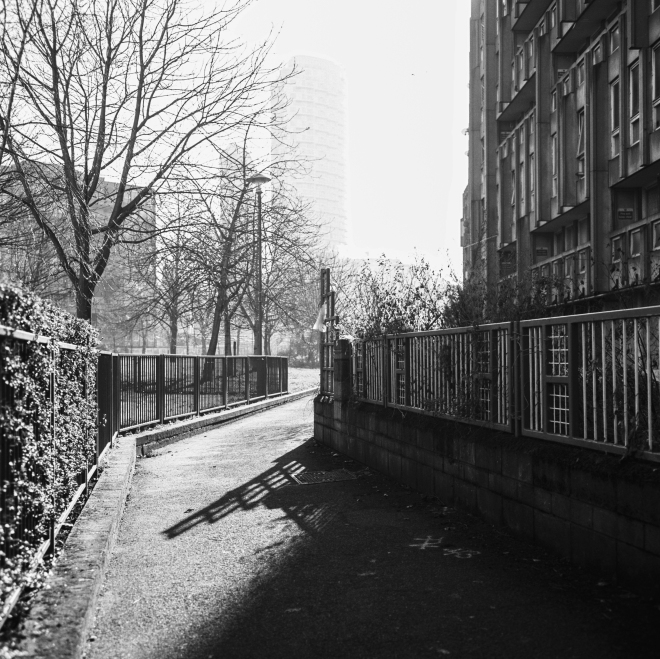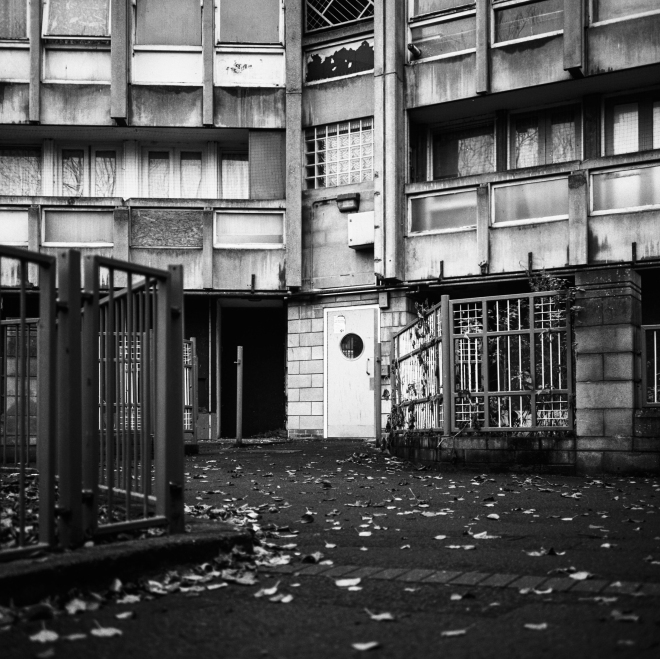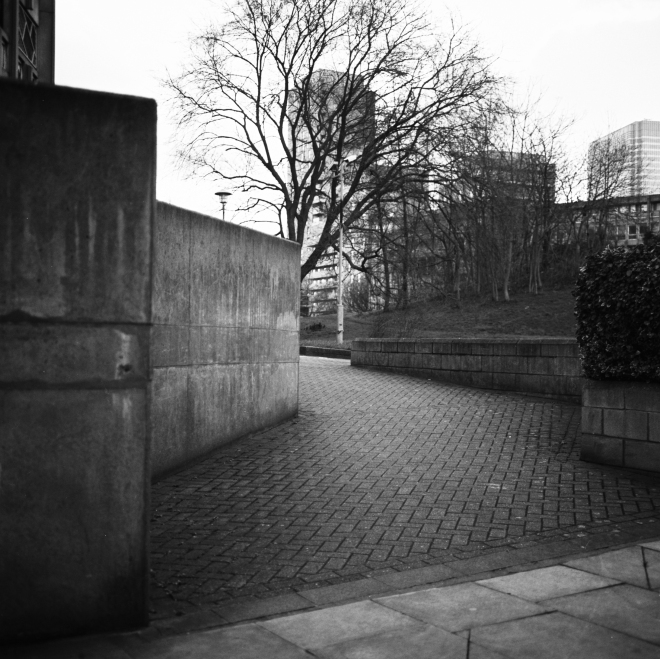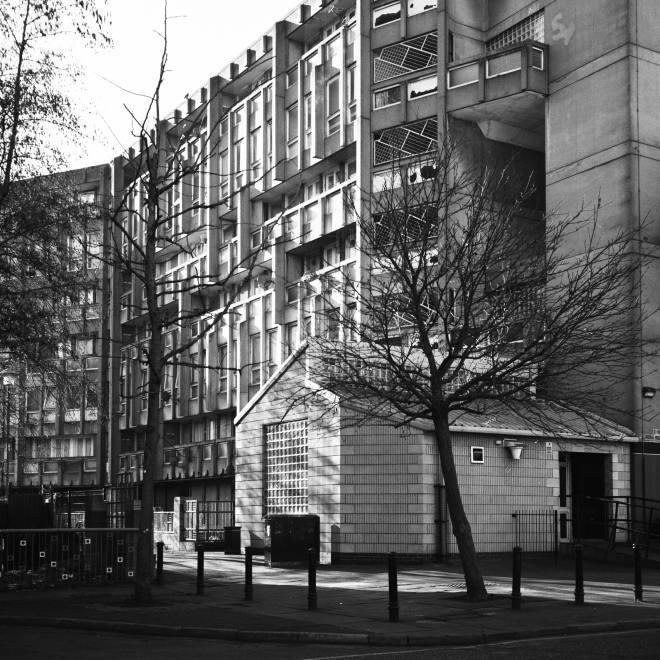Following on from the black and white set of Poplar that I shared in the previous post, I opted to focus on the Robin Hood Gardens council estate.
The estate was designed in the late 1960s by the architects Alison and Peter Smithson and completed in 1972. The design, similar to the Park Hill estate in Sheffield, was founded on the concept of ‘streets in the sky’. However there were serious shortcomings on the design as the architects had to compromise on a lot of aspects. Residents would often complain about structural failings such as the persistent breakdown of the lifts and that the ‘streets’ encouraged criminal activity.
Attempts by campaigners and architects – who value the estate’s architecture as a prime example of 1960s British brutalism – to get the building listed have failed repeatedly, and so the estate has long been earmarked for demolition. My photos represent possibly some of the last taken on the estate (by an outsider), and there is a detectable sense of anticipation when walking around the estate. It is tempting to frame the photos primarily against the backdrop of the failure and subsequent demolition of Robin Hood Gardens. It could perhaps be taken as a microcosm for the failure of the ideas of the 1960s planners who sought to reshape the British urban landscape.
What I found more interesting and something that you could only observe by being at the estate, is that there is still community that clings on. It is easy to forget about the people who live there when caught up in the furore of listing applications, regeneration plans and demolition rumours. My photos show the minor arts of daily life still occurring against the backdrop of a 1960s designed council estate that now sits half empty and almost completely abandoned by the local authority.
I think these photos contain more of a focus than the previous series taken around Poplar – which was a general look at the area rather than narrowing down to a theme or idea. Also I feel these photos show much more about the people who live there (they contain people for one thing) but also show signs of normal, everyday life, despite the reputation and high level murmurings that surround the estate. I may therefore revisit RHG a couple more times (shot with a 6×7 camera, 55mm lens and colour film) to shoot with this theme/idea in mind. I like the control and limitations of 6×7 film with the wide 55mm – the slow considered approach to this area feels appropriate. Most of the images feel well composed in the landscape format although some could do with some tweaking and/or returning to shoot.
(Technique: Pentax 6×7 with 55mm lens and Kodak Portra 400 / Fuji Pro 400h mostly shot at 1/125-1/250th at F/4-F/8)
